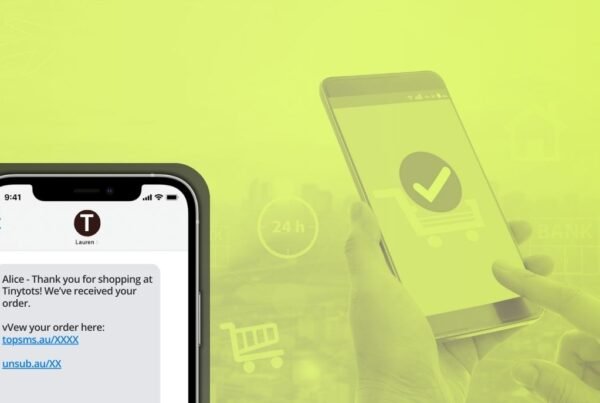Introduction
For years, email marketing has been the go-to for businesses to reach out to and engage with their customers.
But in today’s hypercompetitive digital landscape, there are a multitude of marketing channels and business owners need to know which are most effective.
As business owners strive to gain a competitive edge, they recognise that the choice between these two communication channels can significantly impact their success. Every business has a limited marketing budget and there is an understandable reluctance to take on another marketing channel if it is not worth it.
In this article, we’ll examine SMS versus email engagement to see which is more effective at influencing customer connections and driving business outcomes.
SMS Marketing: A Closer Look
What is SMS marketing, and how does it work?
SMS marketing, short for Short Message Service marketing, is a direct communication channel used by businesses to send concise text messages to their target audience’s mobile devices.
These messages are typically limited to 160 characters and can include promotional offers, alerts, reminders, and other valuable information.
SMS marketing works by leveraging the ubiquity of mobile phones, as nearly everyone carries a mobile device, ensuring a broad reach for your messages.
It allows businesses to engage with customers in a direct and personalised manner, delivering time-sensitive information instantly, making it an effective and convenient marketing tool.
What are the benefits of SMS marketing for businesses?
Did You Know?
90% of SMS Messages Are Read Within 90 Seconds!
The benefits of SMS marketing are varied and clear.
First, it boasts exceptionally high open rates, with over 90% of SMS messages being read within 90 seconds of receipt. With some studies boasting of 98% open rates.
This rapid response makes SMS marketing ideal for time-sensitive promotions, flash sales, shopping behavior notifications or urgent alerts.
Moreover, SMS marketing is cost-effective, as it doesn’t require extensive design or lengthy content creation, and sending SMS messages is relatively inexpensive. In this sense, the character limit can be an advantage.
Additionally, SMS marketing fosters higher engagement due to its unobtrusive nature and the personal touch it adds to interactions. 70% of customers would rather receive an SMS than an email.
How does SMS marketing contribute to customer engagement?
SMS marketing enhances customer engagement by creating a more personal and responsive communication channel.
It makes it easy for businesses to send tailored messages that resonate with recipients, increasing the chances of interaction. The instant nature of SMS messages means customers can respond or take action immediately, leading to higher engagement levels.
SMS marketing is an opt-in channel. This means the audience only consists of customers who subscribe to receive messages – so they are already interested in what the business has to offer.
Finally, it is an excellent way to build trust between you and your customers. Sending SMS notifications when a product is purchased and shipped relieves one of the main online shopping anxieties.
When used strategically, SMS marketing can foster real-time conversations, prompt feedback, and ultimately build lasting customer relationships.
Email Marketing: An In-Depth Analysis
What is email marketing, and how is it different from SMS marketing?
Email marketing is a digital marketing strategy that involves sending promotional or informative content via email to a list of subscribers.
Unlike SMS marketing, which relies on short text messages, email marketing allows for more comprehensive content, including images, links, and multimedia
It often involves creating newsletters, product updates, and personalised offers to engage the audience effectively.
The main advantage is that it can provide a richer experience than SMS enabling businesses to deliver more detailed and relevant information in a potentially more appealing manner.
What are the advantages of email marketing as a communication channel?
From Mailchimp to Klaviyo, there are now hundreds of email providers that provide automation, email templates and creative controls to make it even easier for businesses to engage with their customers.
Many email providers include smart sending technology to help optimise the ideal time to reach subscribers. Typically, it is a cheaper channel, costing between 1 – 3 cents per email – depending on the provider, the number you send, and the included services. However, since many platforms bill based on the number of contacts, this number can vary wildly.
The ability to add links and buttons to an email also allows for tracking of key performance metrics beyond open rates, providing valuable insights for future optimisation.
How does email marketing impact customer engagement?
Modern email marketing providers have come a long way, and now allow businesses to segment their email lists to send targeted messages, resulting in more relevant and personalised communication. They also make it easy to deliver promotional content that aligns smoothly with that of the destination – which can be highly effective for sales, offers and promotions.
Email marketing disadvantages
Did You Know?
The Average Person Receives Over 100 Emails Every Day
Potential for Inbox Overload: One of the key drawbacks of email marketing is the colossal number of emails the average person receives – this may be as high as 121 per day.
Subscribers can easily miss an email marketing message or simply ignore it.
Deliverability Challenges: Emails may end up in spam folders, reducing their visibility to subscribers, and businesses need to constantly monitor email deliverability and adhere to email regulations.
Content Fatigue: Over time, recipients may experience content fatigue, leading to a decline in engagement. This can be a challenge for businesses to keep their content fresh and engaging.
SMS Marketing: Key Points to Consider
What key engagement metrics should you consider for SMS marketing?
Open Rates: SMS marketing boasts impressive open rates, often exceeding 90%. This metric measures the percentage of SMS messages that are opened by recipients. The high open rate is attributed to the immediacy of text messages, as most people check their texts shortly after receiving them.
Delivery Rates: SMS marketing also excels in terms of delivery rates. Virtually all SMS messages are delivered to recipients’ mobile devices, ensuring that your message reaches its intended audience.
Spam Rates: Since this is an opt-in audience and it is subject to strict regulations, Spam rates for SMS are typically very low, often under 3%.
Click Through Rates: Again, given the immediacy and the high quality of the audience SMS messages often average between 9-10%, depending on the industry and the type of message.
Did You Know?
SMS Messages Open Rates Are Typically 3X That Of Email
What engagement metrics matter most in email marketing?
Open Rates: Email marketing open rates can vary widely but typically range from 15% to 25%. This metric tracks the percentage of sent emails that are opened by recipients. Open rates are influenced by factors like subject lines, sender reputation, and email content.
Delivery Rates: Email delivery rates are generally high but may not be perfect. They measure the percentage of sent emails that successfully reach recipients’ inboxes without bouncing or being marked as spam. Maintaining good delivery rates requires list hygiene and compliance with email regulations.
Spam Rates: Unfortunately, email marketing campaigns often are marked Spam by email providers such as Gmail. This can be improved with an appropriate sender name and email address, but cannot be eliminated entirely. It is also common for people to forget they signed up for something, and in their frustration mark an email as spam.
Click Through Rates: These tend to average around 2.5%, depending on the industry and the type of message, and exactly how and why your subscribers joined your list.
Which has higher engagement: SMS or email marketing?
Comparing open rates and delivery rates, SMS marketing clearly has an advantage. SMS messages enjoy extremely high open rates, which can significantly outperform email open rates. Additionally, SMS delivery rates are virtually perfect, ensuring that messages reach their intended audience with minimal risk of going undelivered or being marked as spam.
| Performance Metric | SMS | |
| Open Rate | 98% | 15-25% |
| CTR | 10% | 3.8% |
| Response Time | 90 seconds | 90 minutes |
| Spam Rate | 3% | 85% |
| Cost Per Message | $0.032 – $0.047* | $0.01 ~ $0.05 ** |
**Depending on the platform, add-ons chosen, and general package
Essentially, SMS messages are more likely to reach your subscribers and therefore you are more likely to get your audience to act on your message.
SMS Marketing vs Email Marketing (Closing Thoughts)
In the ever-evolving world of digital marketing, the choice between SMS and email marketing is not a one-size-fits-all decision. It depends on a variety of factors, including the nature of your business, target audience, and marketing objectives. As we’ve explored throughout this article, both SMS and email marketing have their unique strengths and advantages.
SMS marketing shines with its unparalleled open rates and delivery rates. It offers immediate engagement and is highly effective for time-sensitive promotions, alerts, and personalised interactions. The opt-in nature of SMS marketing ensures that recipients are genuinely interested in your messages, fostering a receptive audience.
On the other hand, email marketing provides a versatile platform for delivering more extensive content, including multimedia and detailed information. It excels in its ability to segment audiences, automate campaigns, and provide valuable insights through analytics. When executed effectively, email marketing can maintain strong open rates and achieve respectable click-through rates.
In short, SMS marketing is highly effective at getting a message into the hands of your subscribers. However, in some cases, email marketing may be potentially more effective at priming your audience for another task – for example shopping on a website.
In conclusion, the most effective approach often involves integrating both SMS and email
Remember that the effectiveness of either marketing channel depends on your ability to craft engaging content, understand your audience, and maintain compliance with relevant regulations. By combining these strategies and making data-driven decisions, you can elevate your customer connections and achieve your business objectives in today’s competitive landscape.

TopSMS is here to make your life easier.
We stripped away all distractions so you can create and send your SMS campaign in seconds.
Simple!
All features are included in our per-message price. Top SMS Credits never expire. And because we charge ZERO fees and have no lock-in contracts, you can use them whenever you like!
- Pay as you go
- No subscriptions!
- Credits never expire
- FREE custom sender names!




